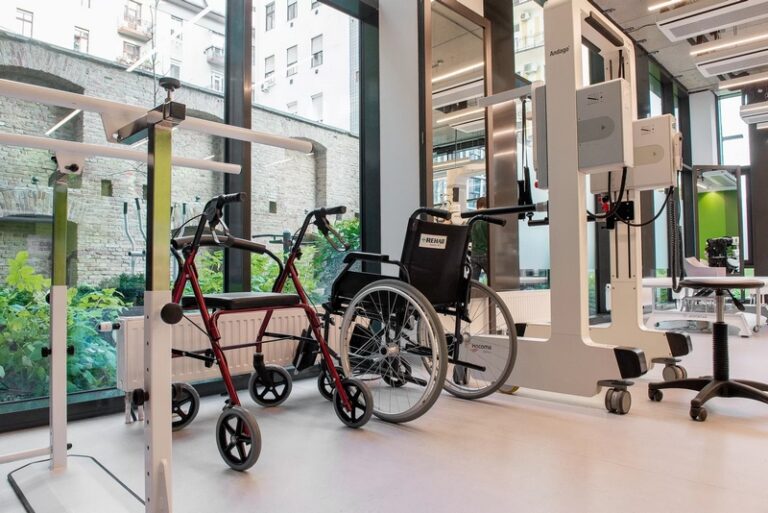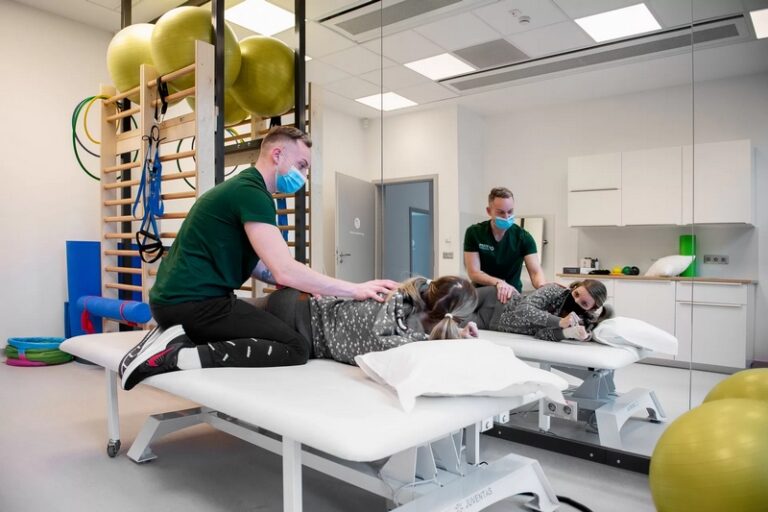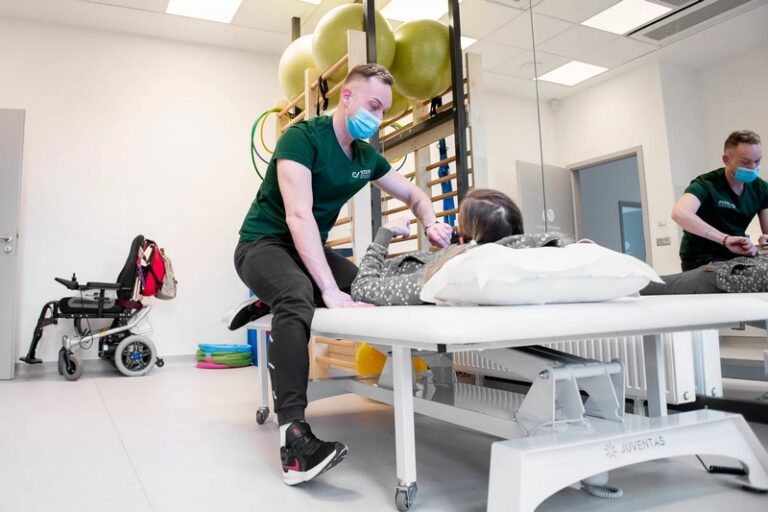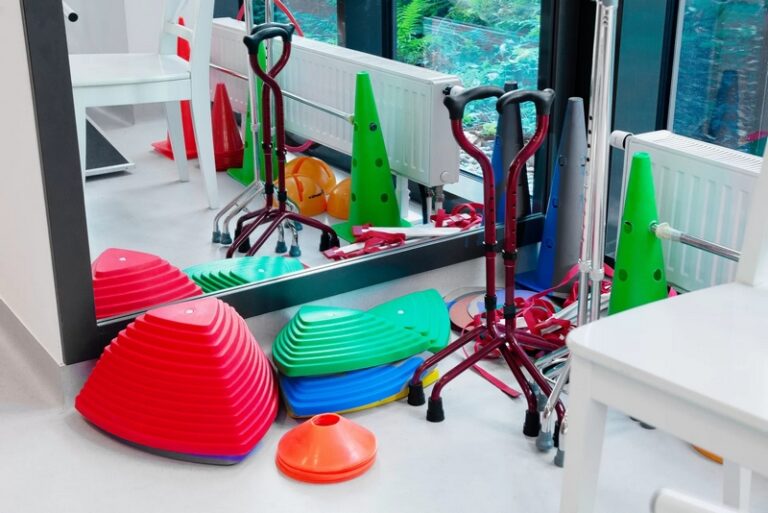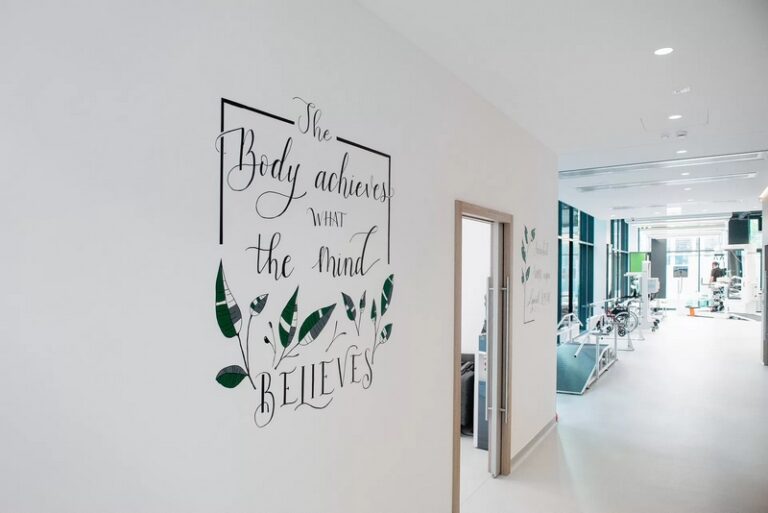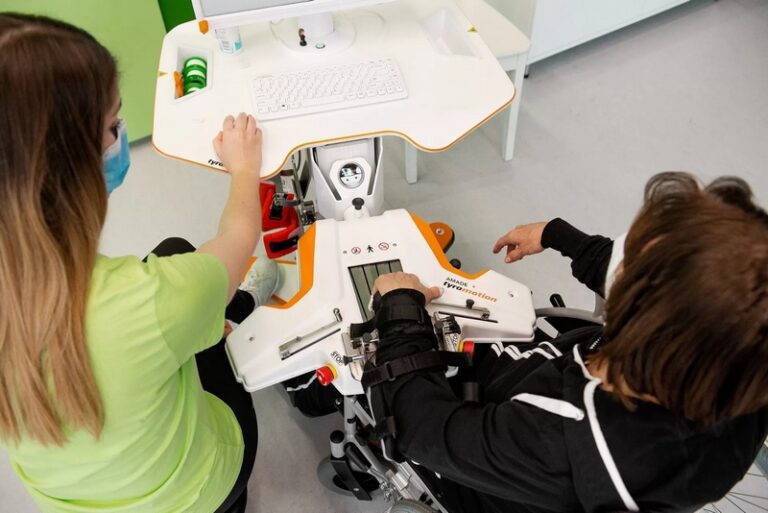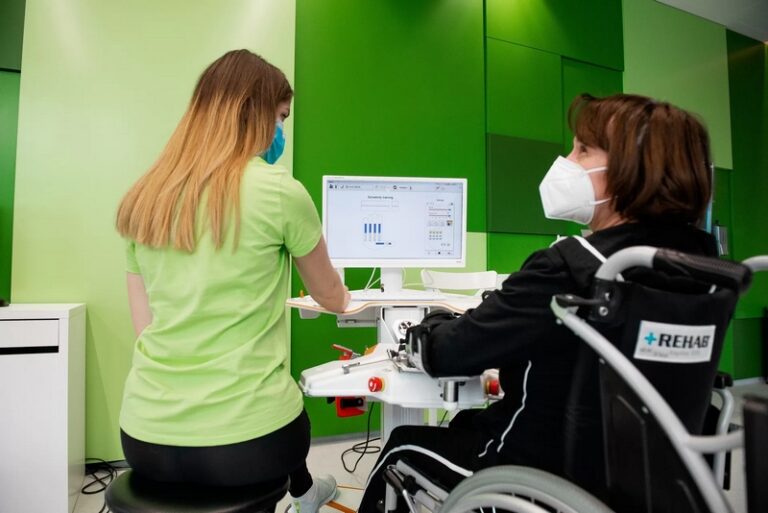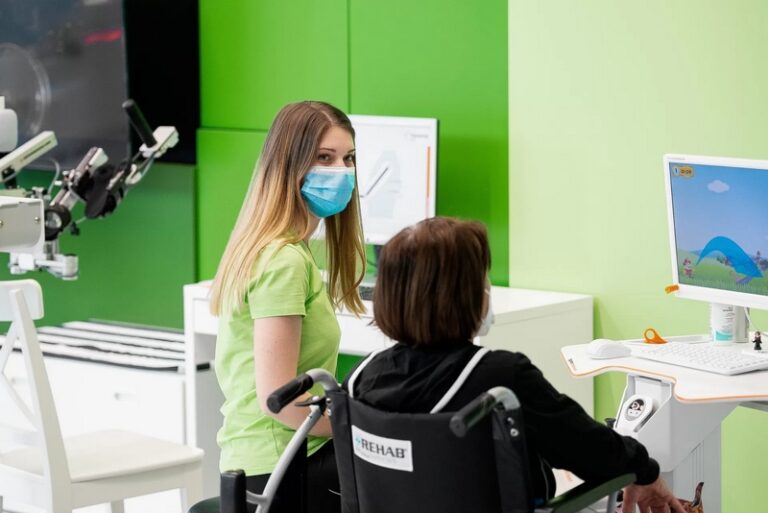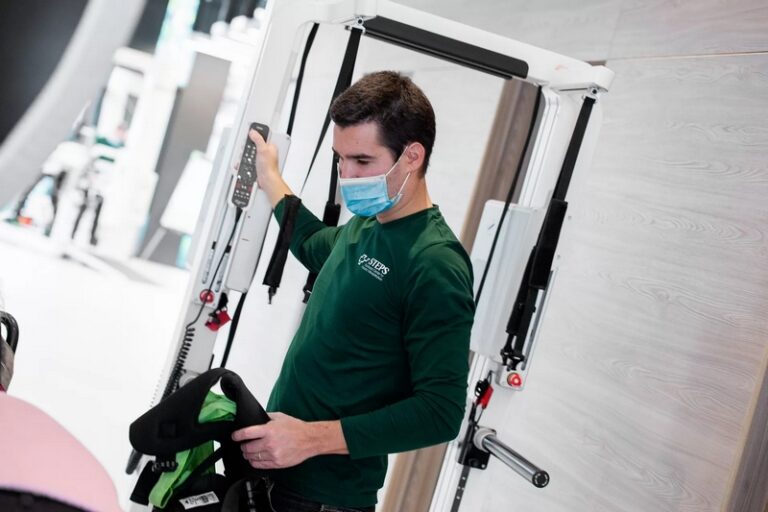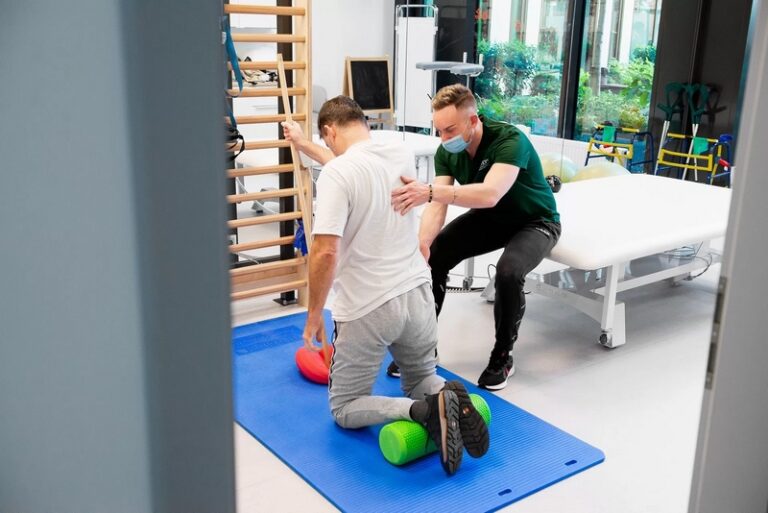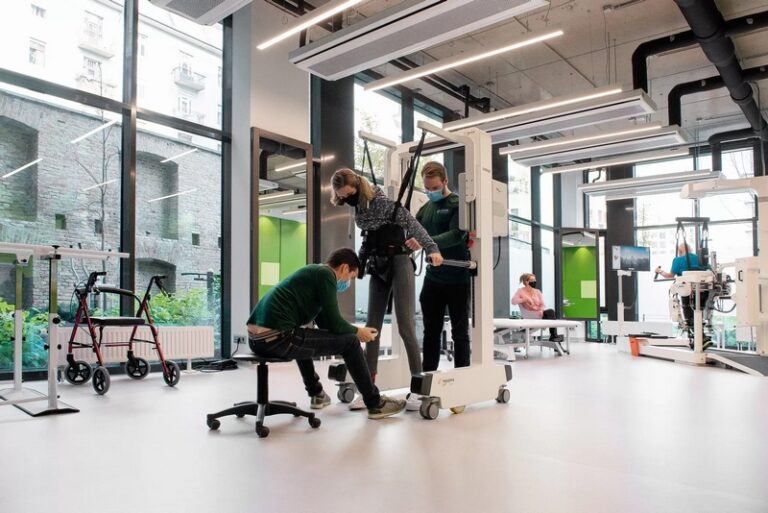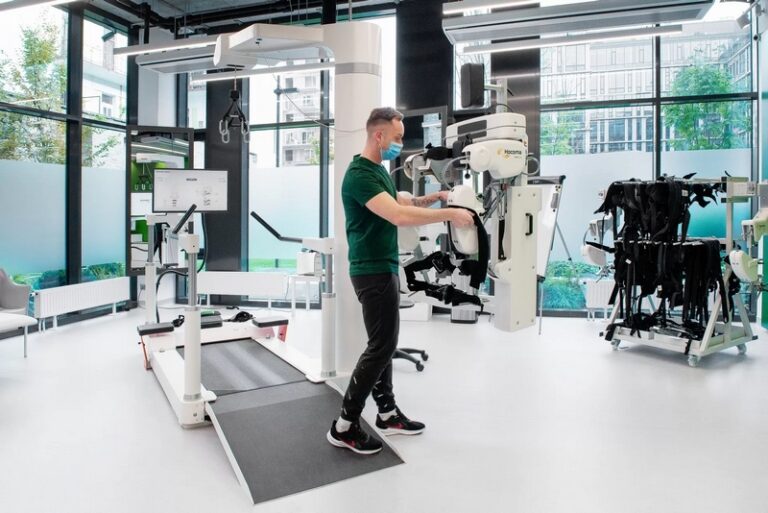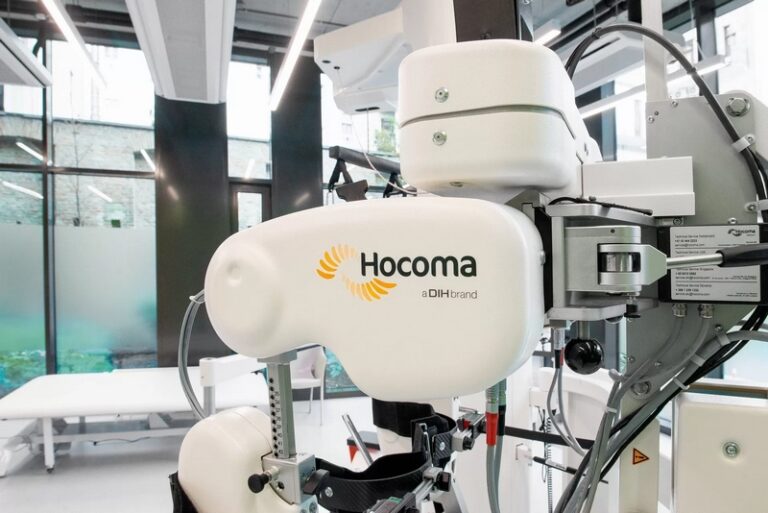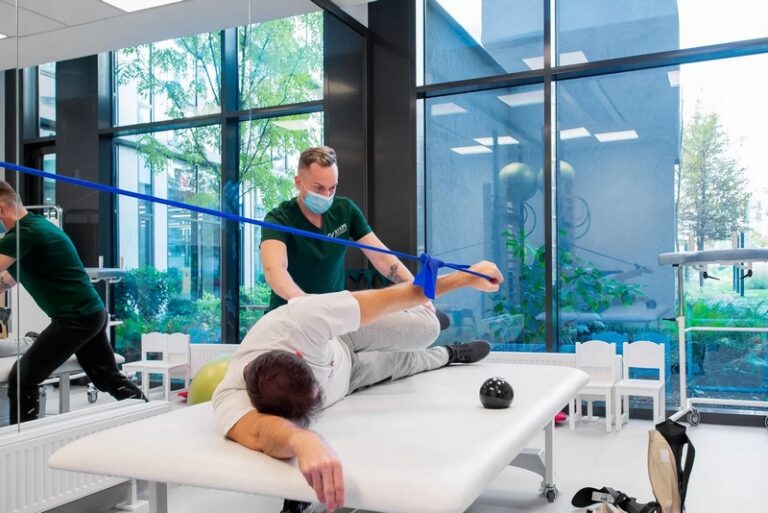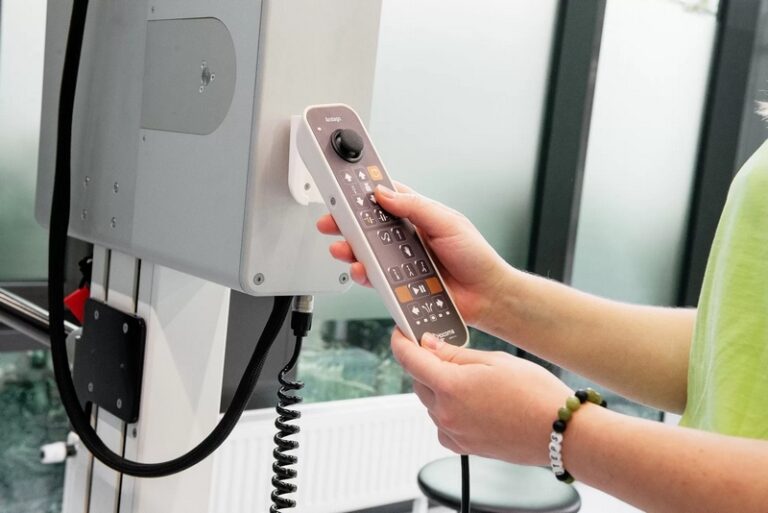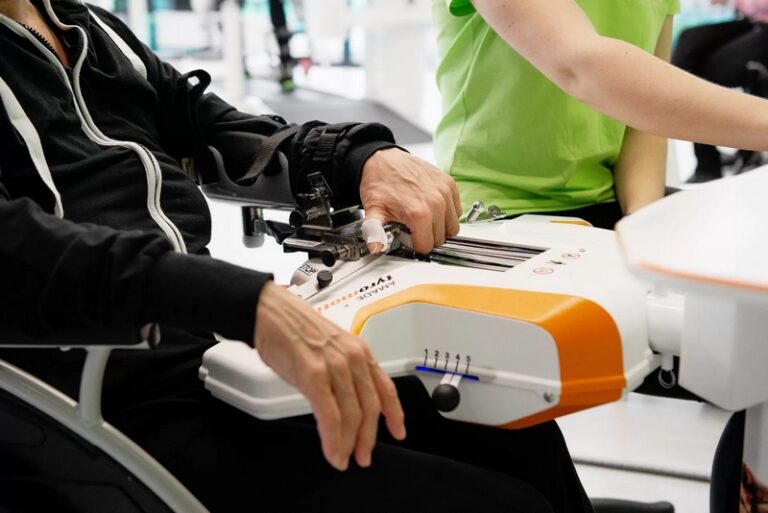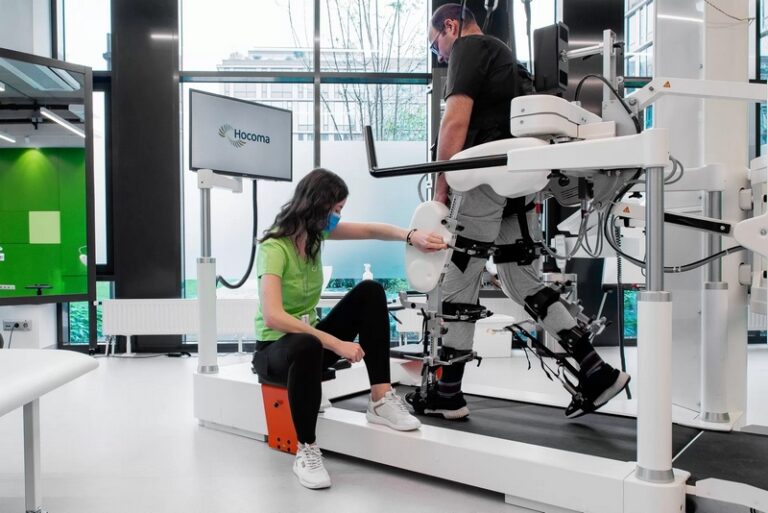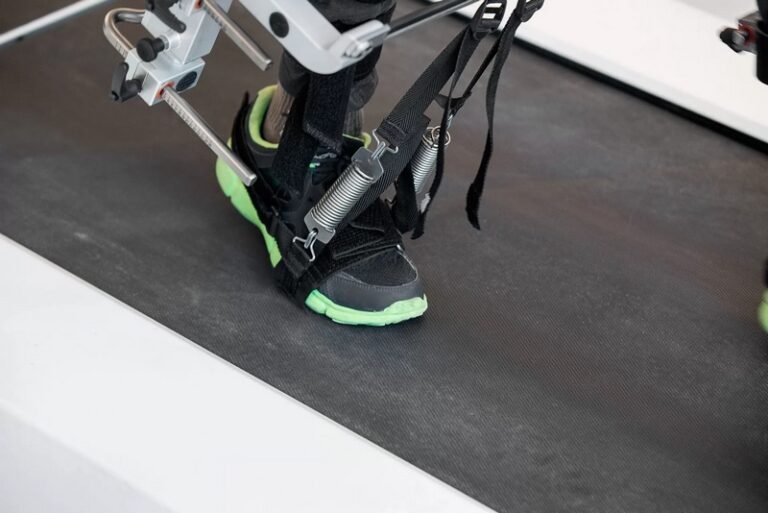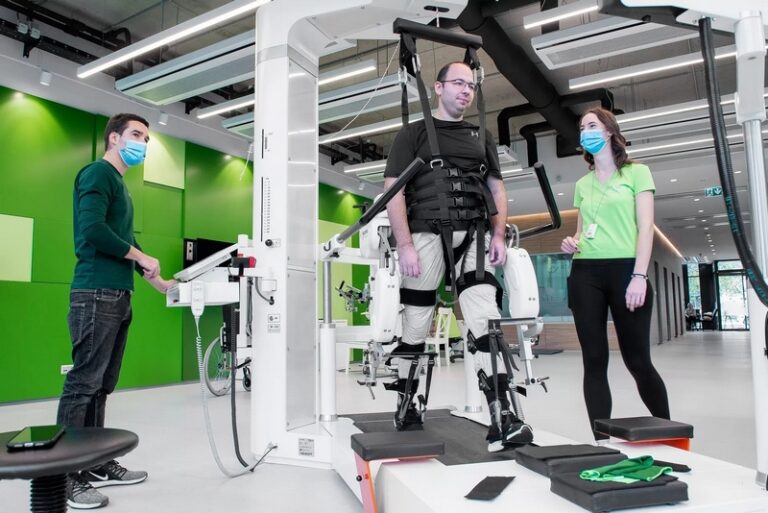The Services of STEPS Budapest – Robotic Rehabilitation Center
The
Our center’s main task is the efficient and safe rehabilitation of individuals with neuromuscular and musculoskeletal problems using robot-assisted technologies and other therapeutic methods. One of the greatest advantages of robotic systems is the high number of repetitions, precise adjustability, and individualized support, which allows for earlier therapy initiation even in cases of severe mobility impairment. Accurate measurements and continuous, objective feedback help ensure that progress is well monitored, and settings can be fine-tuned as needed.
Adult and Pediatric Care
Adult care (60% of total care):
- 40% stroke
- 35% spinal cord injury
- 15% multiple sclerosis
- 10% neuromuscular/general postoperative care
Pediatric care (40% of total care):
- 80% cerebral palsy
- 10% genetic diseases
- 10% mixed specific developmental disorders / peripheral neuropathies
Indication and Contraindication
Indication:
- Neuromuscular diseases (traumatic brain injury, traumatic spinal cord injury, peripheral nervous system damage, cerebral palsy)
- Musculoskeletal injuries
- General rehabilitation care
Contraindication:
- Patients requiring specialist background and close monitoring
- The first 6 weeks of postoperative care
- The ossification phase following a traumatic bone fracture
- Hemodynamically unstable patient
- Patients not yet able to be verticalized
- Untreated vascular diseases
Robotic Equipment and Other Therapeutic Options
Conductive Pedagogical Care
The conductive education system provides an opportunity for the comprehensive development of the personality and cooperation with peers, paving the way for genuine integration. The basis of conductive pedagogy is that despite neurological damage, the nervous system is capable of building new connections, which can be supported through an appropriate teaching-learning process.
Our mission is to improve the quality of life of children and adults living with mobility difficulties—primarily due to central nervous system injury. Early intervention is of paramount importance, but we also place great emphasis on adult rehabilitation, supporting the recovery of the skills needed for everyday independence and returning to work.
Closing Thoughts
The goal of the
I currently work at the National Institute of Medical Rehabilitation, where I primarily focus on the rehabilitation of adult musculoskeletal and neurological patients.
I can help with stroke (cerebral circulatory disorders), dizziness, headaches, lower back pain, numbness, loss of consciousness, epilepsy, and the diagnosis, treatment, and management of Parkinson’s disease.



